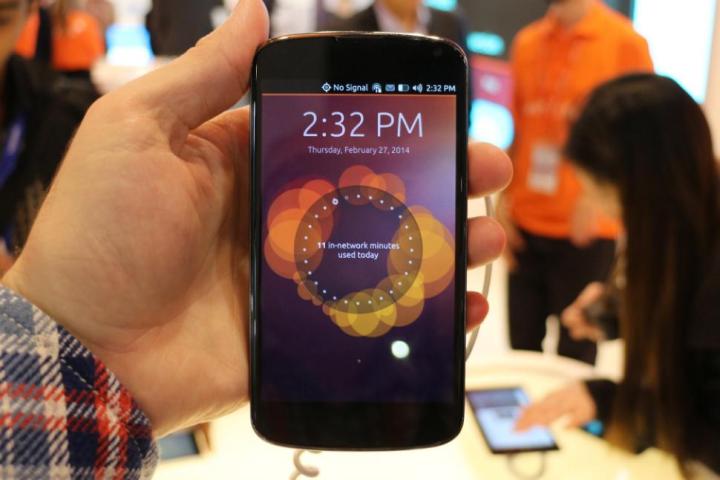
The Aquarius E 4.5 Ubuntu Edition, made by Spain’s homegrown smartphone company BQ, will cost just $190 when it arrives, and will be sold unlocked to work on any carrier’s network. Its spec sheet isn’t very impressive, but its software is the main draw anyways. Still, this 4.5-inch phone with its lousy 540 x 960 pixel resolution, average MediaTek quad-core Cortex A7 processor, and measly 1GB of RAM won’t draw too much applause from techies. The Aquarius’ mid-to-low-end specs round out with 8GB of storage, a 2,150mAh battery, and dual SIM support. It will have a decent 5-megapixel front-facing camera and an 8-megapixel back camera with autofocus, dual flash, 1080p video, BSI sensors, and a lens produced by Chinese optics experts Largan Precision, though.
Ubuntu’s unusual user interface is the main draw of the Aquarius. Unlike other mobile OSs that use home screens as storage space for apps, the gesture-based smartphone interface Scopes puts a bunch of cards with aggregated, themed content on your screen that you swipe through. Individual app icons are hidden in the side of the screen or occasionally placed together on a card. For example, the “Today” card might show your calendar, weather, and key notifications, while the “Music” card will show you your playlist, the “News” cards hows you highlights of articles you might be interested in, and so on.
We liked Ubuntu Mobile when we had the chance to try it this time last year, so it’ll be interesting to see how it has changed. Of course, as with any new OS, Canonical’s main challenge is getting developers to make apps for its platform. Right now, selection is pretty limited, which will make the first Ubuntu phone more of a novelty than a smash hit.
The device will reach Europe in a few days’ time, and a few carriers are offering SIM bundles with the phone. You can read the full press release here.


